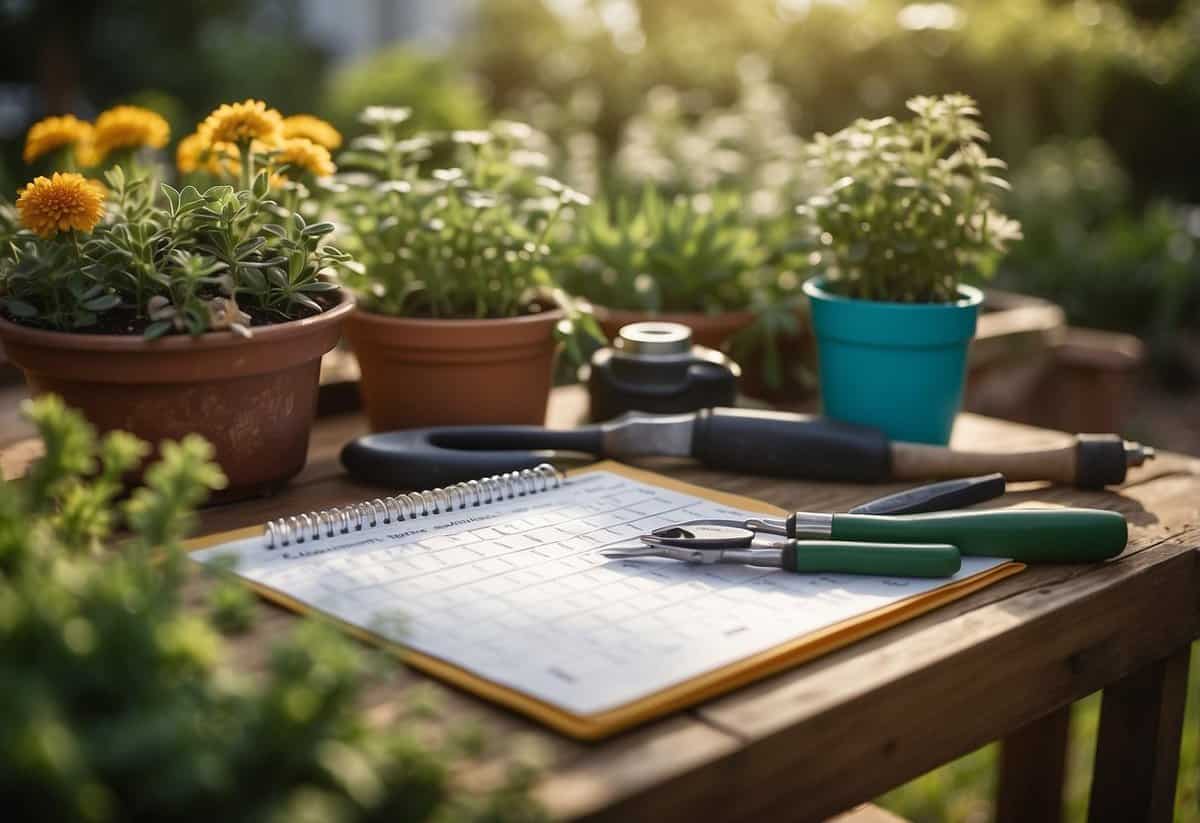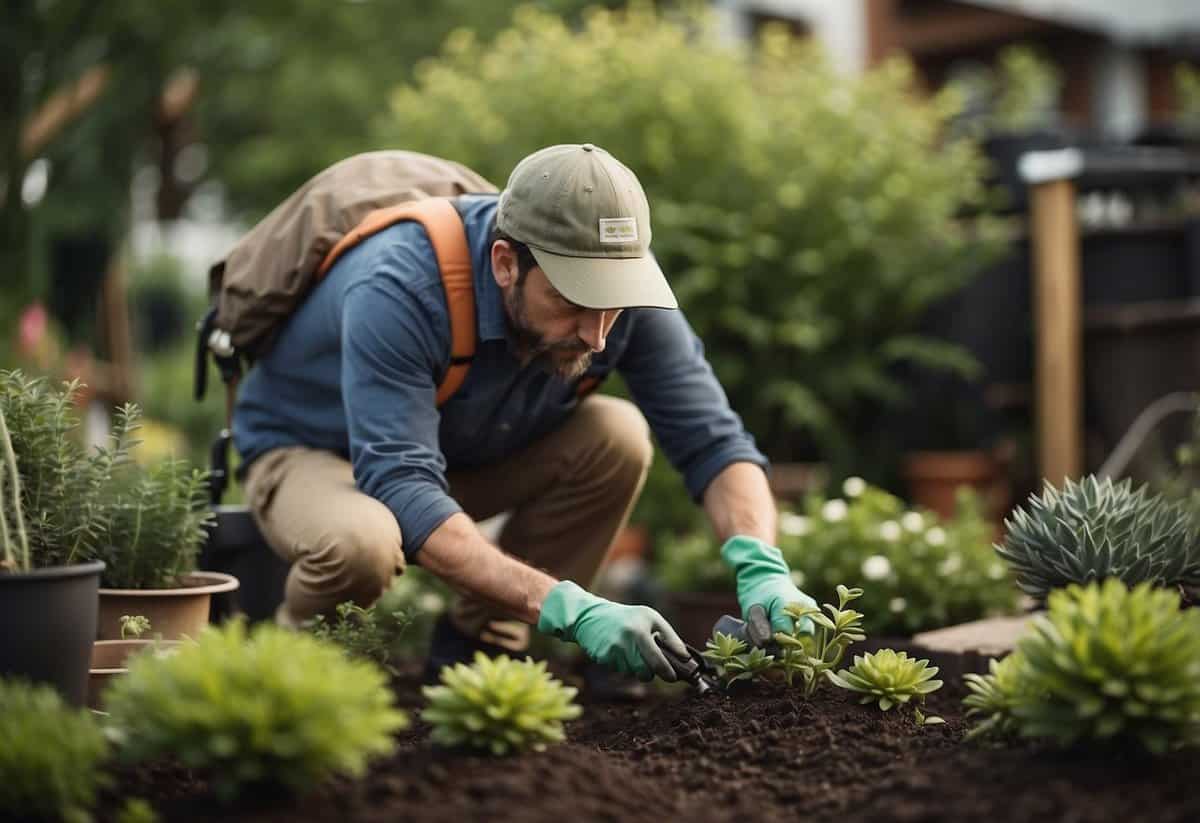How Many Hours a Week Does a Gardener Work? Insights on the Daily Life of Gardeners
If you’re wondering how many hours a week a gardener works, the answer largely depends on the size of your garden and the level of care it needs. Typically, a gardener works around 1 to 3 hours per week for a small to medium-sized garden. This might include tasks like weeding, mowing the lawn, and trimming hedges.

For larger estates, you might need a gardener more often. Some homeowners even hire full-time gardeners who work around 5 days a week. This extensive upkeep ensures that large areas are consistently well-maintained and looking their best.
Maintenance needs can also affect how often you’ll need a gardener. Regular, weekly visits might be necessary to keep everything tidy and healthy. On the other hand, you might need less frequent visits if your garden is less demanding. Be sure to explore the different options to find what best suits your garden’s needs.
Understanding the Role of a Gardener

A gardener’s role encompasses a variety of tasks to keep a garden healthy and beautiful. This includes everyday maintenance and specialized services for more complex garden needs.
Essentials of Garden Maintenance
Gardeners perform daily tasks that ensure your garden stays vibrant and orderly. Watering plants is crucial, especially during dry spells. Regular weeding helps prevent unwanted plants from taking over your garden.
Trimming and pruning are equally important. These activities help maintain the shape and health of your plants. Using tools like pruning shears and garden forks will make the job easier.
Lawn care is another essential service. Mowing the lawn keeps your garden looking neat and can prevent pests. Applying fertilizers and pest control products also promote a healthy garden environment.
You might also require routine clean-ups. This involves removing fallen leaves, branches, and debris that can disrupt the garden’s look and health.
Specialized Gardening Services
Beyond basic upkeep, there’s a range of specialized services gardeners provide. Planting flowers and vegetables requires expertise to ensure they thrive in specific conditions. You might need help choosing the right plants for your garden’s soil type and climate.
Creating irrigation systems is another specialized service. These systems ensure your plants get the right amount of water with minimal waste.
Hardscaping involves more complex tasks like building rock walls or terracing. These features can add beauty and structure to your garden.
In some cases, you might need a gardener who can handle plant diseases or pest infestations. This requires a deep knowledge of plant science and access to specialized treatments.
Hiring a gardener proficient in these tasks will ensure your garden remains healthy and attractive year-round.
Weekly Work Schedule

The number of hours a gardener works each week can vary greatly depending on whether they are full-time or part-time, and the time of year. You will find that busy times like summer require extra effort to keep everything flourishing.
Full-Time vs Part-Time Hours
Full-time gardeners typically work around 35-40 hours a week. They have a set schedule, often from Monday to Friday. Full-time hours allow gardeners to handle large estates or parks, where constant upkeep is needed. For instance, one might spend mornings on tasks like trimming hedges and afternoons planting new flowers or watering.
Part-time gardeners usually work around 15-20 hours per week. They are often employed for smaller gardens or by homeowners who need help with basic garden maintenance. Part-time work might include tasks like weeding, mowing, and occasional planting. Many people hire part-time gardeners for weekly visits to keep their gardens tidy without the need for daily attention.
Seasonal Variations in Schedule
In summer, the weekly schedule can become busier. Gardens require more watering and attention due to rapid growth and higher temperatures. During this time, gardeners might work longer hours or extra days to ensure everything remains healthy. Tasks include weeding, watering, and dead-heading flowers.
In contrast, winter usually means shorter working hours. Plants grow more slowly, and there are fewer tasks to perform. Work focuses on pruning, clearing fallen leaves, and preparing for the next growing season. The type of work changes with each season, requiring a flexible and proactive schedule to keep gardens in top shape year-round.
In spring and autumn, the schedule balances out. These seasons involve planting new flowers and prepping the garden for summer growth or winter rest. Depending on the garden’s size and type, your hours and tasks will vary to match the changing needs of each season.
Gardening Tasks and Techniques

Gardening involves a mix of routine tasks and specialized techniques to ensure a thriving garden. You will learn about essential daily care, enhancing soil, and designing your landscape.
Routine Care and Thorough Maintenance
Your daily and weekly tasks in the garden are crucial for plant health. Watering your plants properly is vital; most gardens need about one inch of water per week. Use soaker hoses or drip irrigation to get water to the roots where it’s needed most.
Pruning and deadheading flowers help encourage new growth and keep your plants looking tidy. Regular weeding ensures that your plants don’t compete with unwanted intruders. Mowing the lawn keeps your grass healthy and prevents it from overshadowing smaller plants. Every few weeks, consider deep aeration of your soil to ensure it isn’t compacted, allowing your plants’ roots to breathe.
Soil Enhancement and Plant Nutrition
Healthy soil is the foundation of a successful garden. Regularly add compost and organic matter to improve soil structure and nutrient content. Fertilizing your plants is also necessary for their growth. Use a balanced fertilizer for most plants, but consider specialized fertilizers for specific needs, like tomato or rose feed.
Mulching helps retain moisture and suppress weeds. Spread a 2-3 inch layer of mulch around plants, avoiding direct contact with stems to prevent rot. If your soil is heavy clay or sandy, mix in organic matter to improve its texture. Proper seeding ensures a lush green lawn or a vibrant flower bed; follow instructions on seed packets for the best results.
Landscape Design and Specialty Gardening
Creating a beautiful garden involves thoughtful design. Landscape design can range from simple flower beds to elaborate themed gardens. Choose plants that suit your climate and garden style. For formal gardens, consider well-defined borders and symmetrical plantings.
Specialty gardening, like herb, vegetable, or butterfly gardens, requires specific knowledge. For a vegetable garden, plan your planting to include crop rotation and companion planting to enhance growth and protect against pests. Meanwhile, a butterfly garden involves planting nectar-rich flowers and host plants caterpillars need.
Remember, each garden is unique, so adapt these techniques to suit your specific needs and preferences.
Tools and Equipment in Gardening

A gardener’s job requires various tools and equipment to handle different tasks, from daily maintenance to large projects. Knowing the essentials will help you work more efficiently and keep your garden in top shape.
Daily Tools for Garden Upkeep
Daily tools are necessary to maintain gardens regularly. These include:
- Hand Trowels: Perfect for planting small plants and flowers. They are easy to handle and versatile.
- Pruners: Essential for trimming plants, roses, and small branches. Keep your pruners sharp for the best results.
- Watering Cans: Useful for watering plants evenly. Consider the size and weight that you can manage comfortably.
- Garden Forks: Ideal for turning soil and mixing compost. A sturdy fork can be a great asset.
- Spades: Handy for digging and moving soil. Look for one with a strong handle to avoid breakage.
- Gloves: Protect your hands from dirt and thorny plants. Choose ones with a good grip.
Using these tools daily helps in keeping your garden healthy and well-tended. Regular use of pruners, for instance, ensures that your plants stay neat and growth stays controlled.
Advanced Equipment for Large Projects
Large gardening projects call for more advanced tools and equipment. These include:
- Lawn Mowers: Essential for keeping grass at the desired height. Choose between electric or gas-powered based on your garden size.
- Hedge Trimmers: Perfect for trimming and shaping hedges and bushes. Electric or gas-powered options offer better efficiency.
- Garden Rakes: Ideal for clearing leaves and debris. Helps maintain a clean and tidy garden.
- Wheelbarrows: Useful for transporting soil, compost, and other materials. A sturdy wheelbarrow with good balance is beneficial.
- Pole Pruners: Great for reaching high branches without a ladder. They help you cut thick branches with ease.
- Garden Sprayers: Necessary for applying water or treatments evenly. Can be used for fertilizers or pesticides.
By investing in these tools, you enable yourself to tackle bigger tasks efficiently. For instance, a lawn mower keeps your grass looking neat and professional, while hedge trimmers make shaping bushes much easier.







